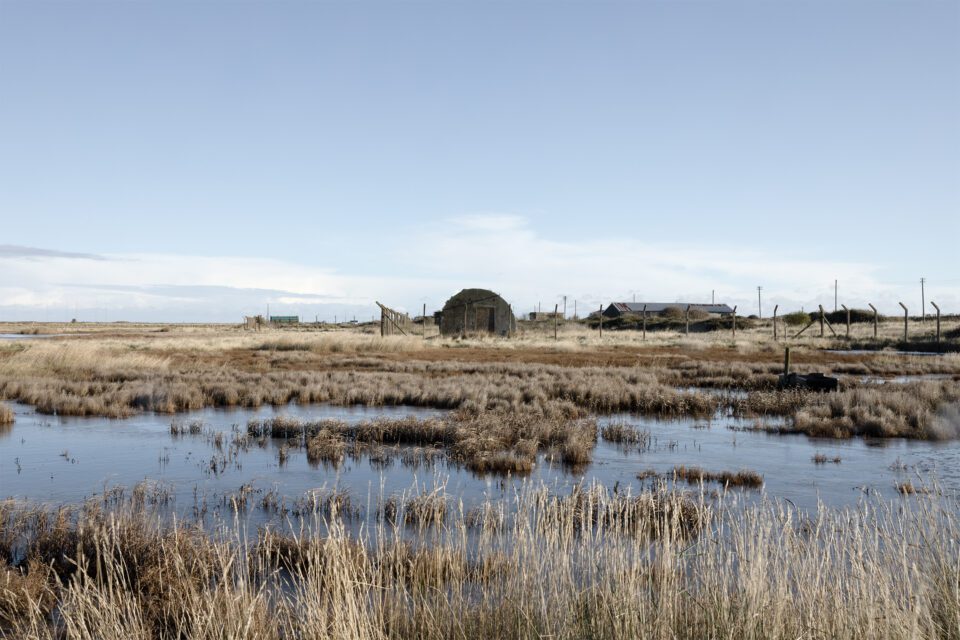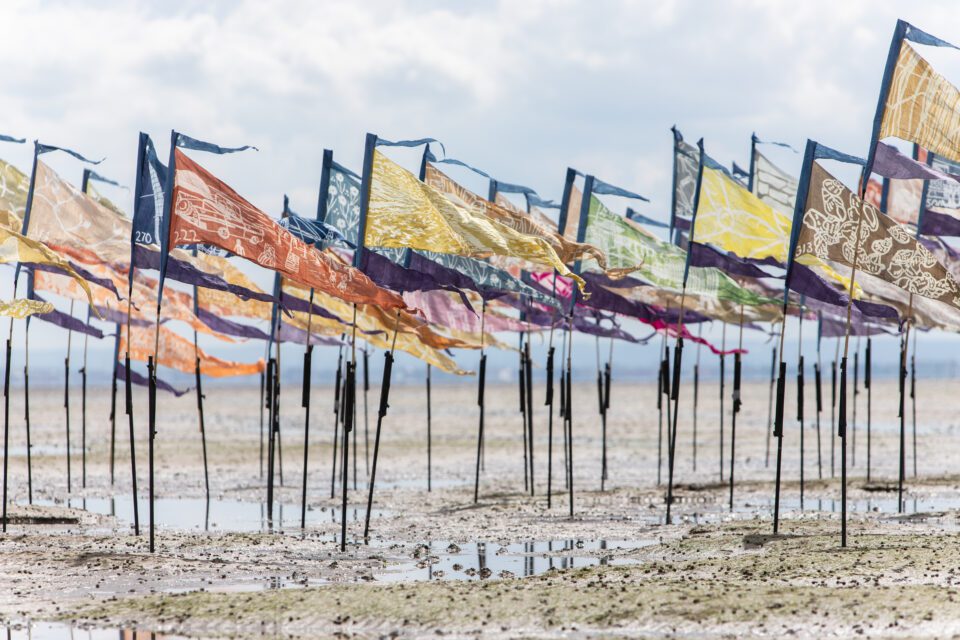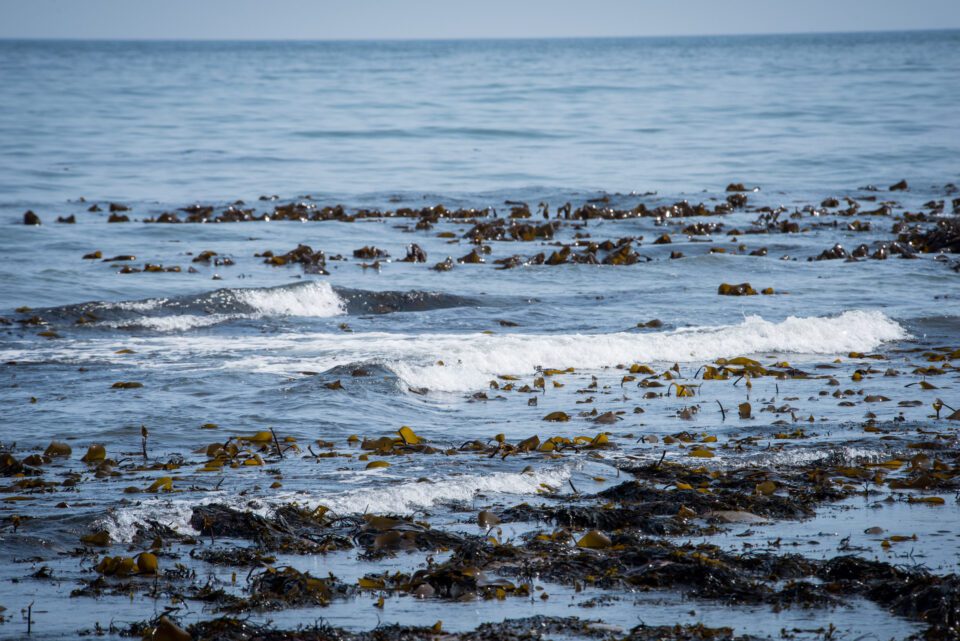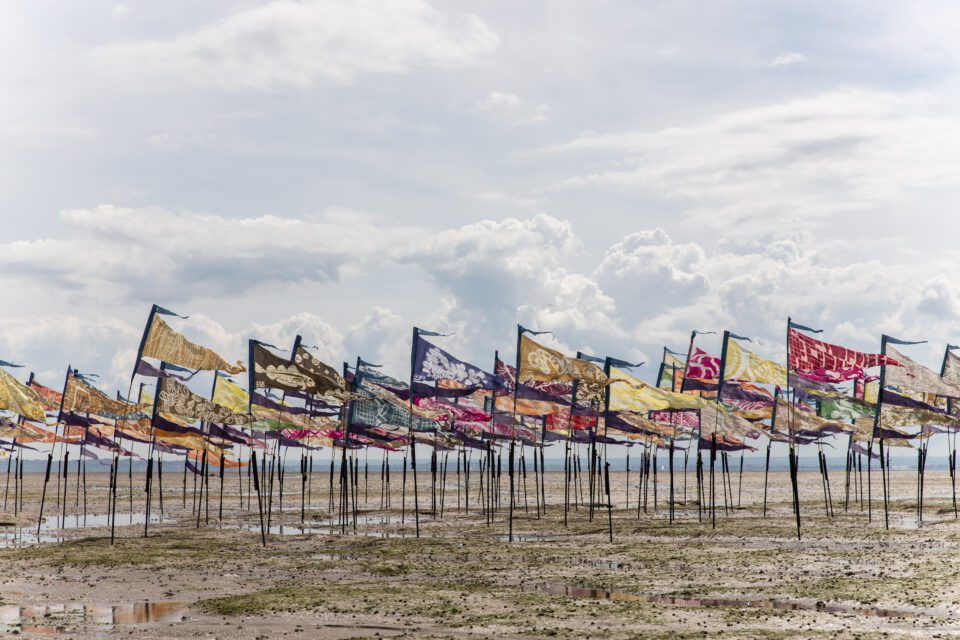In the UK, no-one lives more than 80 miles from the sea. The coastline, which stretches 22,000 miles, is home to a vast array of wildlife, as well as providing endless inspiration for artists and creatives. Beach of Dreams is a nationwide celebration of the unique heritage, culture and futures that are tied to the coast, particularly in the face of the climate crisis. The programme features eight major artist commissions, displayed across the country, which explore topics that range from the hidden habitats beneath the waves to the way that communities and livelihoods depend on the ocean. Creatives include textile artist Rahemur Rahman, who worked with local groups along the Thames to produce silk panels inspired by global craft techniques, as well as sound artist, beatboxer, and DJ Jason Singh’s bespoke soundscape that brings the natural beauty of Colwyn Bay to life. The origins of the event lie with Kinetika, a charity that “unites communities through exceptional designs and public spectacles that inspire social action and enrich local environments.” Founded in 1997 by Ali Pretty, the organisation is driven by a vision to pioneer community-driven art and design. Aesthetica spoke to Pretty about Beach of Dreams, why she thinks collaboration is the key to innovation and progress and how the event is addressing the climate crisis.
A: Tell us about Beach of Dreams. What can people expect from the event?
AP: Beach of Dreams is a month-long festival spanning England, Wales, Scotland and Northern Ireland, inviting people to reimagine our relationship with the coast in the face of the climate emergency. At its heart, it’s both a creative journey and a powerful reflection – uniting art, community and place. Audiences can expect eight newly commissioned works by leading artists, each rooted in specific coastal locations and produced in response to the stories and spirit of those communities. Alongside these, a national artwork will tour over the month – a living tapestry of stories, dreams and hopes for the future, co-created with people all across the UK. What makes Beach of Dreams truly special is its open invitation to the public. Everyone is encouraged to get involved – whether that’s hosting a shoreline performance, organising a beach clean-up, setting out on a local walk, or simply gathering to share memories. No event is too small; every action adds to this celebration. From quiet villages to bustling seaside towns, every person and place along the coast is invited. The festival explores urgent environmental issues, but it’s also a joyful celebration of the landscapes we love.

A: The festival is a huge undertaking. What was your method of selecting the artists and collaborators for this expansive project?
AP: My approach was about bringing artists, regional organisations and communities together to create work that feels both personal and collective. I wanted a programme that unfolds over time, that spans multiple art forms, approaches and cultural perspectives. Each piece is rooted in the specific landscapes and communities the artists are working with, encouraging them to respond to these environments through journeys, workshops, walking and dialogue. I hope our process forms a body of work that lives on beyond May and becomes a lasting legacy of shared creativity and engagement.
A: In the UK, nobody lives more than 80 miles from the sea. How do you see our relationship with the ocean as shaping national identity and history?
AP: The sea is fundamental to how we view ourselves as a nation – it’s at the core of what defines us as an island people. Our connection to the ocean has shaped our culture, history and way of life, from trade and exploration to a deep-rooted sense of interconnectedness with the wider world. As a country, we’ve developed a hybrid cultural heritage through our ongoing relationships around the world. This is something to be celebrated – a diverse, fluid identity that thrives on exchange, adaptation and welcoming new perspectives. The ocean reminds us of our place in the world and the need to protect and nurture that relationship.

A: The project pairs artists with communities across the UK to respond to the climate crisis. How do you balance the urgency of environmental issues with the need to celebrate and honour the cultural and ecological heritage of each region?
AP: The climate crisis is undoubtedly overwhelming, but I believe that the key to addressing it lies in breaking it down into local, manageable actions. We’ve encouraged the artists to focus on specific questions that are relevant to each coastline, helping to create achievable, actionable responses. In this way, the celebration of the environment becomes a shared act – a coming together of people and place. By grounding our responses in cultural heritage, we humanise the landscape. For instance, with projects like Collecting Dreams, Shifting Futures funded by Historic England, we explore the intersection of heritage and environmental issues, while The Beach of Dreams Silks draws inspiration from the Silk Roads, the history of textile trade and the origins of colour, opening up conversations about sustainability and cultural significance. The celebration is as much about learning as it is about honouring the past and imagining a sustainable future.
A: The Beach of Dreams Silks consists of 600 pennants, made by people around the country to reflect their relationship to the coast. It is striking installation that weaves together personal stories and climate commitments. How did the concept of using silk pennants evolve, and what do they symbolise for the communities involved?
AP: It came from a desire to make something that feels both personal and universal. Silk has a deep history in art and culture, and it carries a sense of tradition and continuity. The pennants represent individual stories and commitments to action, but they also symbolise something larger – a shared vision for a sustainable future. For the communities involved, the silks become a way to make their voices heard, to contribute to a collective, and to feel part of something bigger than themselves. It’s a gesture of unity, strength and resilience.

A: Do you have any particular pieces you’re looking forward to seeing come to life?
AP: One of the highlights I’m particularly excited about is the 12-day coastal journey in partnership with the Fife Coast and Countryside Trust. Spanning the entire 117 miles of the Fife Coastal Path, the programme offers a vibrant mix of tours and creative events – anchored by Tide Line, a powerful new commission by Julie Brook that serves as the centrepiece of the celebration. It’s a beautiful example of how journeying through the landscape – physically and creatively – can forge deep connections between people and place. It’s a real testament to the strength of this collaborative model and Kinetika’s model of walking, talking and making that we have honed for the last 30 years.
A: What do you hope will be the legacy of Beach of Dreams?
AP: For me, it is the lasting links it creates – between people, communities and landscapes. The digital platform we’ve built will also help to extend the reach of the project, enabling us to share stories and build networks that continue to grow internationally. The stories shared through Beach of Dreams will live on, and the commitments made will inspire future generations to continue taking action. We are also hosting a legacy event and finale in September in Weymouth, where we will be translating what we’ve learnt into actionable steps working alongside our partners and Beach of Dreams members. It is more than just an event – it’s a foundation for ongoing dialogue and meaningful change.

A: You founded Kinetika nearly 30 years ago to unite communities through silk-based designs and public spectacles. How does it feel to see the incredible impact the organisation has had nationwide?
AP: It’s incredibly gratifying to see Kinetika grow from a small idea into a national force for social change and community engagement. When I first founded the organisation, my goal was always to challenge people’s perceptions through art, to bring people together and connect them through shared creativity. To see the impact of Kinetika now, and to see the networks we’ve built over the years, is a true reflection of the power of art to unite and inspire. What’s even more special is that these values, these connections, continue to grow and evolve. It’s proof that art, and artists, can make a real difference in people’s lives and in the world.
Beach of Dreams runs from 1 May – 1 June 2025: beachofdreams.org
Words: Emma Jacob & Ali Pretty
Image credits:
- Beach of Dreams, Kinetika. The Beach of Dreams Silks. Credit Mark Massey.
- Orford Ness. Credit Lucia Barbagallo. Beach of Dreams, Collecting Dreams, Shifting Futures 04.
- Beach of Dreams, Kinetika. The Beach of Dreams Silks, Credit Mark Massey.
- Kelp at The Wherry, South Tyneside, Courtesy Stronger Shores.
- Beach of Dreams, Kinetika. The Beach of Dreams Silks. Credit Mark Massey.





